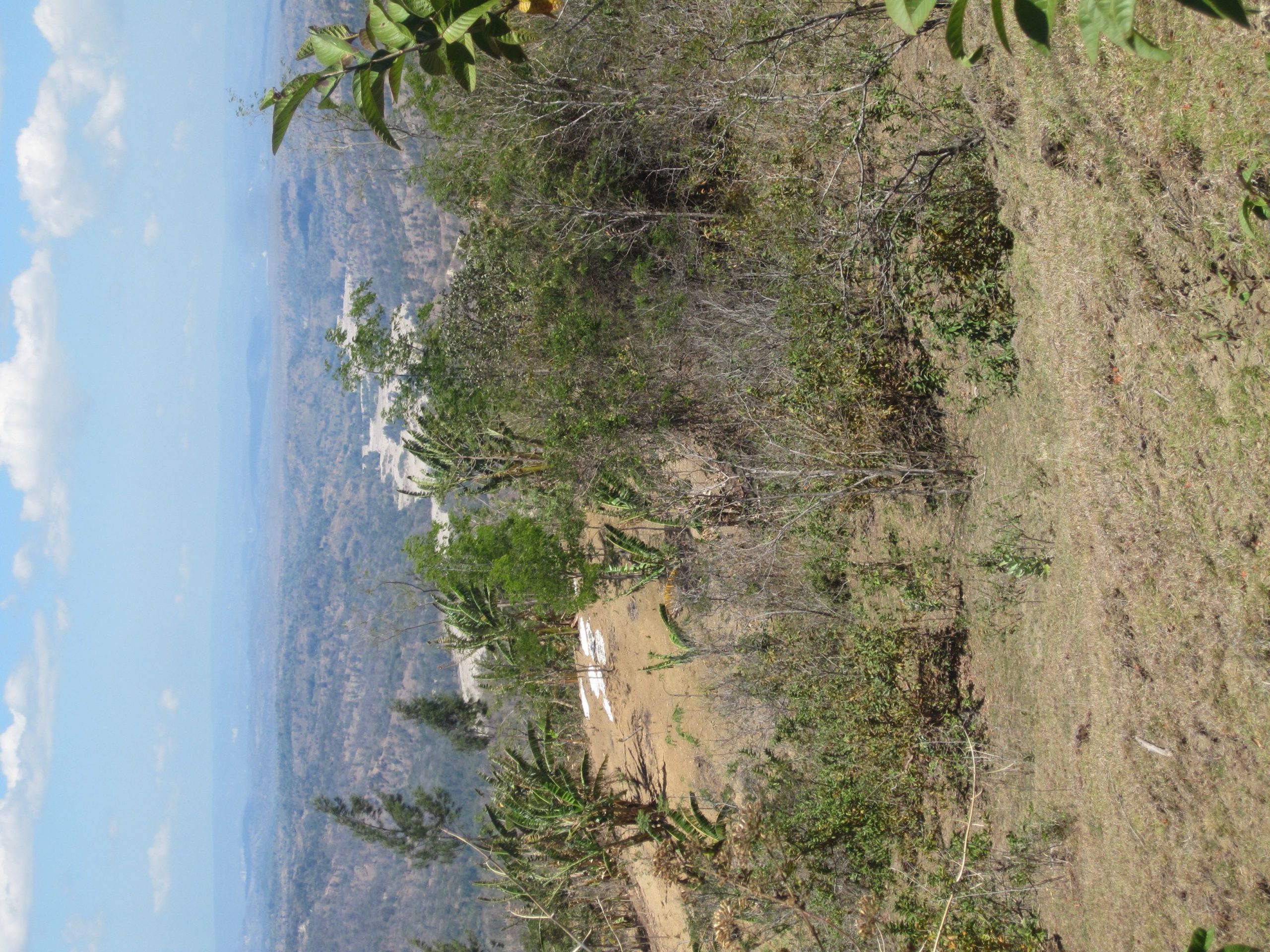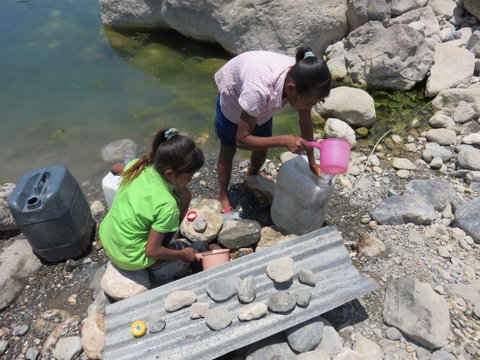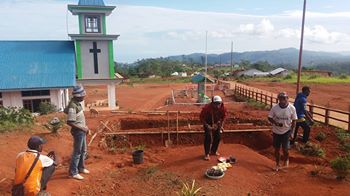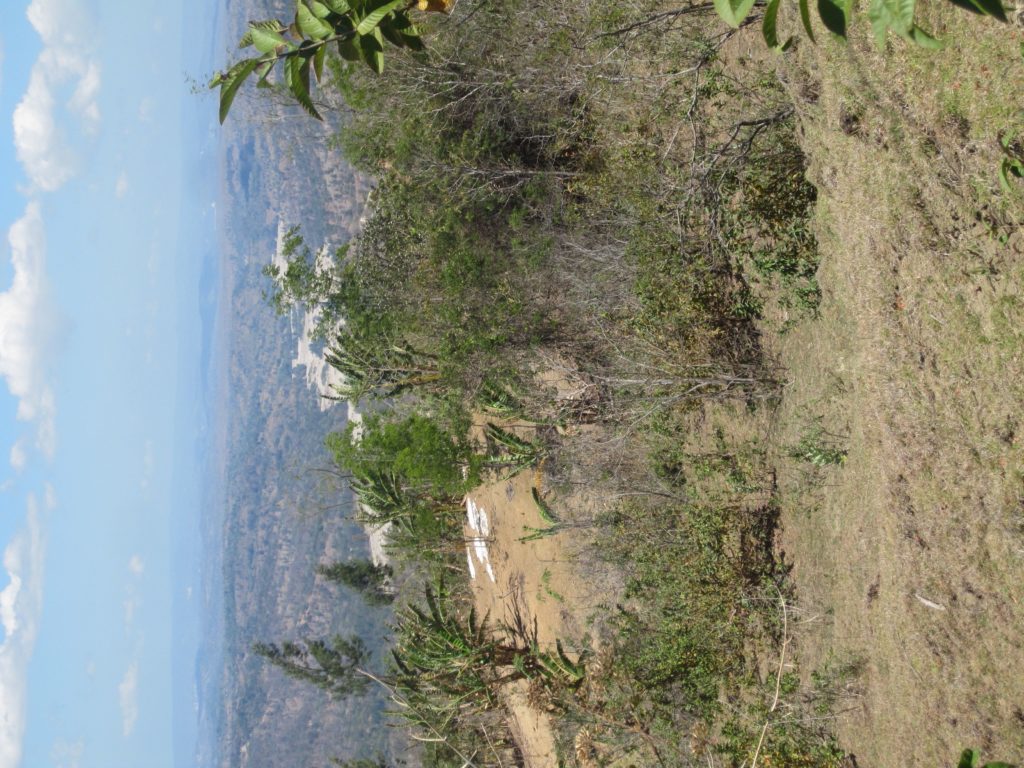Planting Water, Rebuilding Temples
 It’s not every year the tropical rains drench, and drench some more, but this is one of those years. And when the rains transform pah meto (dry land, the Timorese name for this island) from crusty, hot brown to lush and steamy shades of green, it’s easy to forget that water was once sacred. Oral tradition suggests that in a pre-Christian era, Timorese treated large banyan trees and the natural springs their roots guarded with the respect reserved for holy space. Such trees, I’ve heard, were actually targeted by Christians to be hacked down to break their powerful hold over “heathens.” Traditional prayers and rituals asking the sky god for rain are but a faded memory. The cultural destruction wrought by early 20th century Christian piety in West Timor included the destruction of traditional values that protected the environment and sought to sustain ecological balance. Although some in Evangelical Church of West Timor Synod (GMIT) acknowledge, regret, and seek to redress this legacy, recapturing sacredness, once it’s been destroyed, is a challenge.
It’s not every year the tropical rains drench, and drench some more, but this is one of those years. And when the rains transform pah meto (dry land, the Timorese name for this island) from crusty, hot brown to lush and steamy shades of green, it’s easy to forget that water was once sacred. Oral tradition suggests that in a pre-Christian era, Timorese treated large banyan trees and the natural springs their roots guarded with the respect reserved for holy space. Such trees, I’ve heard, were actually targeted by Christians to be hacked down to break their powerful hold over “heathens.” Traditional prayers and rituals asking the sky god for rain are but a faded memory. The cultural destruction wrought by early 20th century Christian piety in West Timor included the destruction of traditional values that protected the environment and sought to sustain ecological balance. Although some in Evangelical Church of West Timor Synod (GMIT) acknowledge, regret, and seek to redress this legacy, recapturing sacredness, once it’s been destroyed, is a challenge.
 Drought is one of seven recognized natural disasters in Indonesia and in September of last year, East Nusa Tenggara Province where we live, suffered the worst effects of the prolonged drought. The specter of women and children lugging water in pails and jerry cans turns no heads, but last year’s dry spell was the first time our neighborhood saw so many family wells go completely dry. Water demands of cities and villages, especially along Timor’s south coast that suffers the impact of hot winds blowing from Australia’s northern dessert, have yet to be addressed in any systematic way.
Drought is one of seven recognized natural disasters in Indonesia and in September of last year, East Nusa Tenggara Province where we live, suffered the worst effects of the prolonged drought. The specter of women and children lugging water in pails and jerry cans turns no heads, but last year’s dry spell was the first time our neighborhood saw so many family wells go completely dry. Water demands of cities and villages, especially along Timor’s south coast that suffers the impact of hot winds blowing from Australia’s northern dessert, have yet to be addressed in any systematic way.
The GMIT Synod seeks to respond to the impact of prolonged drought with a recently launched campaign: “Plant Water! Conserve Water! Harvest Water!” Plant water? I wanted to learn more. Most water available from Timor’s rainfall is wasted as runoff that often leaves a trail of felled trees and eroded soils in its wake. An explosion of “development” that covers more and more land with buildings and concrete in urban areas reduces land surfaces formerly available for the natural absorption of rainwater needed to maintain healthy water tables. This campaign encourages GMIT congregations to dig small holes in the ground to capture runoff during the rainy season. Timor’s coral-rock geological structure means water retention below the earth’s surface is a challenge, so further study is needed to learn what will work best where, but the intention to wed theology with conservation is being realized.
The campaign relates to GMIT’s sub-theme for 2018: “Together with Christ, We Bring to Life a Spirituality of Simplicity on Behalf of Justice Towards our Neighbors and the Environment.” Synod Moderator, Rev. Mery Kolimon, reflects on the sub-theme by lifting up a section of the Lord’s Prayer that, in Indonesian, does not ask for daily bread, but rather for adequate food (Mat. 6.11) and the notion of fair balance (2 Cor. 8.13). In line with the WCC theme of Justice, Peace, and the Integrity of Creation (JPIC), she stresses that because the earth belongs to no one individual or corporation, the church must oppose monopolies that seek to control natural resources. God’s work of salvation through Jesus Christ is intended not only for humanity, but the entire earth.
 Planting water is a contemporary and simple technology that seeks to help restore ecological balance. It is important for the church to take action, but healing the broken sacredness of land and water requires more than a technological fix. Is it possible to reclaim natural springs as sacred space? What about the water holes that are no longer protected as temples? One bridge to remind Timorese Christians of their traditionally sacred water holes is to read again John 4.1-12—Jesus’ revelation as the Messiah through dialogue with the woman at the well. My previous reflections on this passage have focused on the gospel of social inclusion and issues related to women’s sexuality, but I have overlooked the theological significance of the woman’s encounter with the Messiah occurring at the well in light of environmental degradation. In the woman’s encounter with Jesus, the well became holy space. We too encounter Christ at watering holes, not just figuratively, but literally; and when that encounter is recognized those sites become holy spaces. Are we able, have we the freedom, to recognize God in the presence of water?
Planting water is a contemporary and simple technology that seeks to help restore ecological balance. It is important for the church to take action, but healing the broken sacredness of land and water requires more than a technological fix. Is it possible to reclaim natural springs as sacred space? What about the water holes that are no longer protected as temples? One bridge to remind Timorese Christians of their traditionally sacred water holes is to read again John 4.1-12—Jesus’ revelation as the Messiah through dialogue with the woman at the well. My previous reflections on this passage have focused on the gospel of social inclusion and issues related to women’s sexuality, but I have overlooked the theological significance of the woman’s encounter with the Messiah occurring at the well in light of environmental degradation. In the woman’s encounter with Jesus, the well became holy space. We too encounter Christ at watering holes, not just figuratively, but literally; and when that encounter is recognized those sites become holy spaces. Are we able, have we the freedom, to recognize God in the presence of water?
UN mechanisms such as the resolution on rights to water, World Water Day (March 22) and Earth Day that conveniently falls on a Sunday this year (April 22) can be useful compliments to our liturgical traditions, but faith is rooted in more than campaigns and international resolutions. Along with a review of the WCC JPIC materials, many of which remain pertinent today, I propose that this spring, in preparation for Christ’s resurrection, we create water liturgies and rituals. This woman whose experience of the well and of sharing water as a sacred encounter is a fitting companion to join us on the journey to rebuild nature’s temples and encounter the living Christ anew. Let us remember Cape Town’s four million residents who face an imminent water crisis, let us recall that women are the world’s primary water carriers and protectors, and let us learn where the water we use comes from and reflect on ways to give reverence to it and protect it. Let us take steps towards healing a desecrated earth and, as GMIT reminds us, let us celebrate the journey of rebuilding sacred spaces of water and earth for it is a journey that moves us towards an integrated spirituality and a more balanced ecology.
From West Timor,
Karen and John Campbell-Nelson
John and Karen Campbell-Nelson serve with the Evangelical Church of West Timor. John and Karen serve as a staff support for the Synod’s Theological Commission and Synod programs. Their appointment is made possible by your gifts to Disciples Mission Fund, Our Church’s Wider Mission, and your special gifts.

